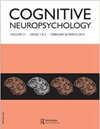Coming to grips with a fundamental deficit in visual perception.
IF 1.7
3区 心理学
Q2 PSYCHOLOGY
Cognitive Neuropsychology
Pub Date : 2022-02-01
Epub Date: 2022-02-19
DOI:10.1080/02643294.2022.2040975
引用次数: 1
Abstract
Davida’s striking pattern of visual deficits and spared visual abilities presents us with a real challenge of interpretation (Vannuscorps et al., 2021). How is it that her perception of the orientation of high-contrast 2D objects with sharp edges is so wildly (but consistently) disturbed, while her everyday behaviour in the 3D visual world appears to be essentially normal? Indeed, if it were not for the fact that she shows disturbances in reading for which the perception of the orientation of letters is critical, her deficits may never have come to light. According to her case history, Davida is skilled at soccer and basketball, two activities that are not only visually demanding but require rapid computation of the orientation of objects in both world-centred and egocentric coordinates. In short, in a pre-literate world, Davida would have functioned just fine. Vannuscorps et al. (2021) interpret Davida’s deficits as evidence for a disturbance in an intermediate stage in the construction of conscious visual representations in shape-centred frames of reference – with a selectivity in the deficit biased toward the parvocellular pathway. If this is the case, then one can understand why reading would be particularly susceptible to such a disturbance in representation. Not only does the parvocellular pathway play a key role in the processing of print, but the correct perception of an individual letter critically depends on computing the orientation of the letter. For most people, reading is easiest with high-contrast sharply defined letters. For Davida, it is quite the opposite. She does better under dim lighting and with blurred letters, situations where the magnocellular projections to the ventral stream are providing the required input to decode the letters. Presumably, unlike people with normal vision, she would not show the transient improvement in the ability to read small print that occurs after adaptation to flicker, which reduces sensitivity to coarse-scaled visual signals from the magno pathway (Arnold et al., 2016). In fact, she might get worse. Davida’s deficit in the perception of the orientation of objects raises many interesting questions. We will focus on only one: does her deficit affect the selection of wrist orientation and hand posture when she reaches to grasp objects? The fact that Davida does so well interacting with objects in the real world suggests that the visuomotor mechanisms in her dorsal stream are functioning properly. This is perhaps not surprising since because dorsal stream processing relies heavily on visual input from the magnocellular pathway, and Davida’s magnocellular pathway seems intact. Nevertheless, Vannuscorps et al. (2021) tested her visuomotor abilities by having her reach out and place her right thumb and index finger on the ends of a 2D line or on two unconnected dots that were the same distance apart as the ends of the line – “as if she were grasping it/them”. Not surprisingly, Davida had no problem placing her finger and thumb accurately on the two dots. When confronted with the line, however, she typically rotated her hand so that her finger and thumb ended up straddling the line, at points where the ends of the line would have been if it were rotated着手解决视觉感知的基本缺陷。
本文章由计算机程序翻译,如有差异,请以英文原文为准。
求助全文
约1分钟内获得全文
求助全文
来源期刊

Cognitive Neuropsychology
医学-心理学
CiteScore
5.50
自引率
11.80%
发文量
23
审稿时长
>12 weeks
期刊介绍:
Cognitive Neuropsychology is of interest to cognitive scientists and neuroscientists, neuropsychologists, neurologists, psycholinguists, speech pathologists, physiotherapists, and psychiatrists.
 求助内容:
求助内容: 应助结果提醒方式:
应助结果提醒方式:


